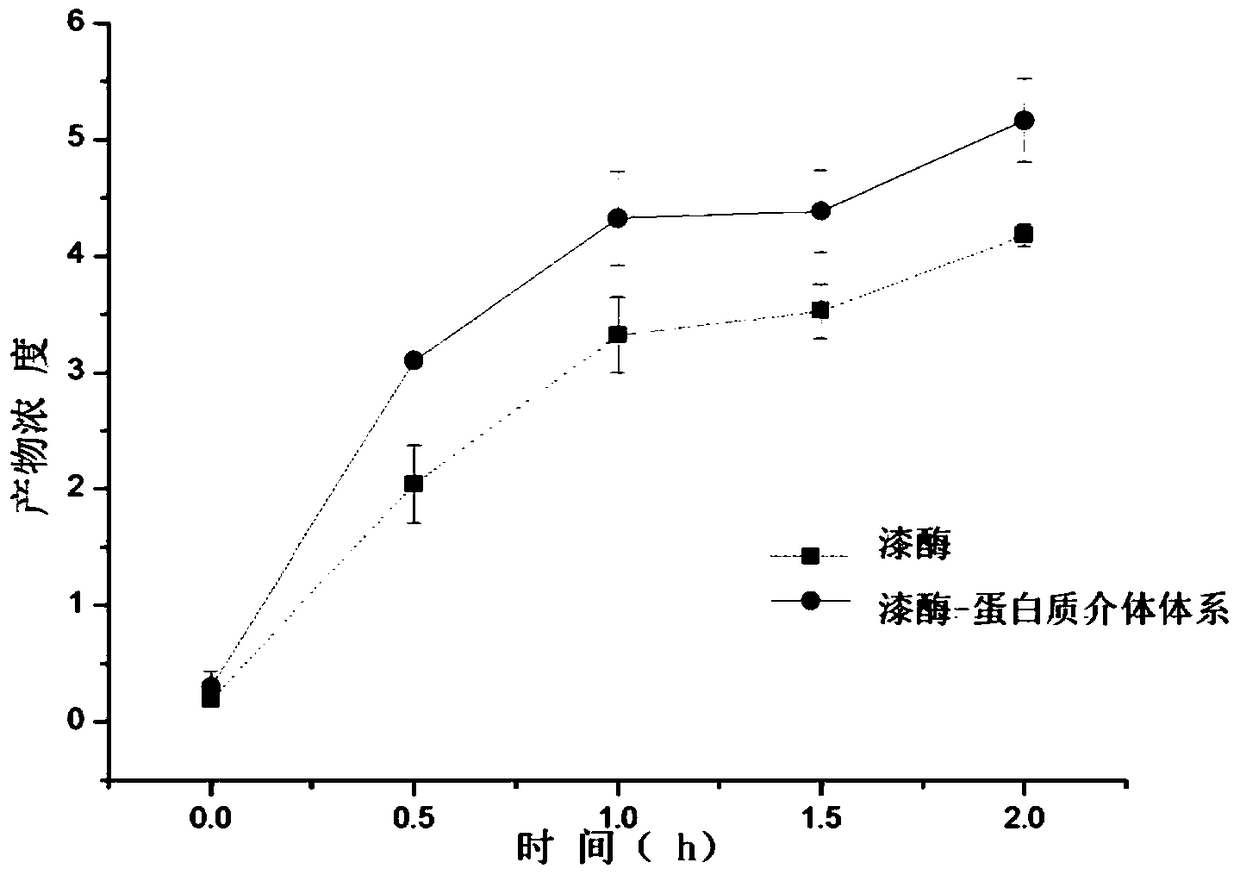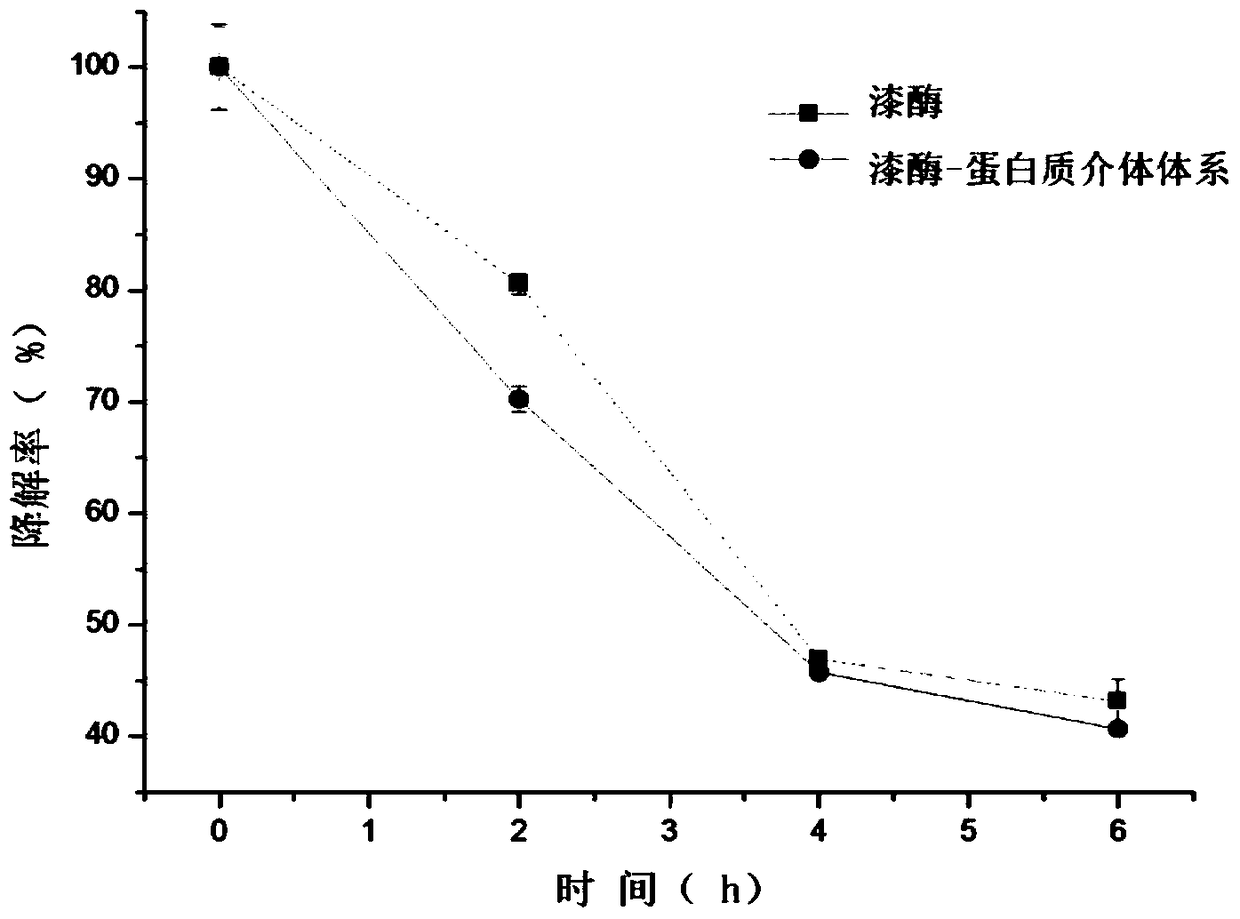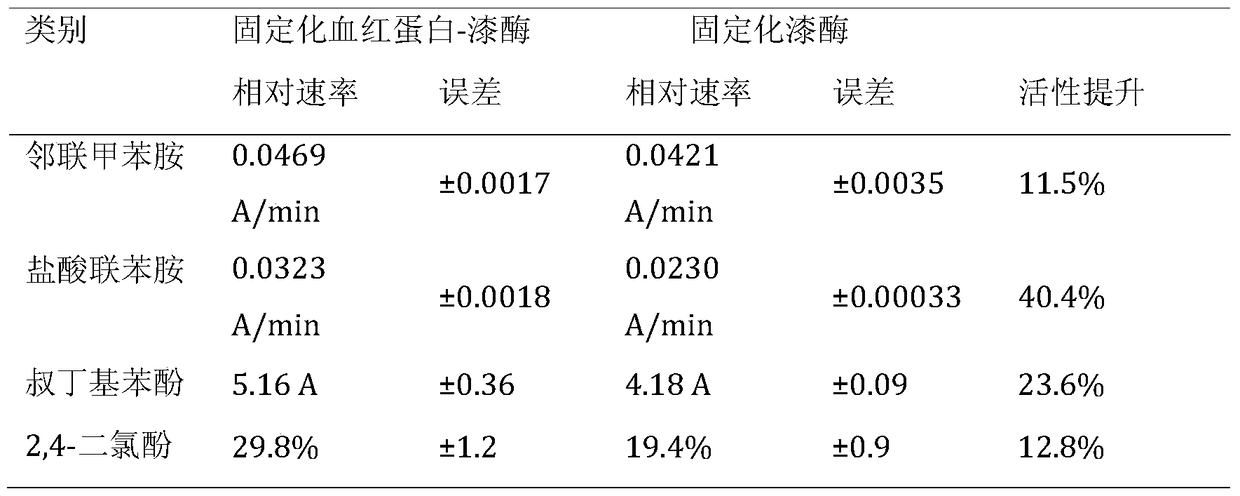Method for treating water pollutants with immobilized laccase based on protein mediator
A technology for immobilizing laccase and treating water, which is applied in water pollutants, chemical instruments and methods, biological water/sewage treatment, etc., can solve the problems of high cost, unstable use properties, etc. The effect of shortening the reaction time
- Summary
- Abstract
- Description
- Claims
- Application Information
AI Technical Summary
Problems solved by technology
Method used
Image
Examples
Embodiment 1
[0030] Preparation of immobilized laccase
[0031] Step 1: Weigh 2g of sodium alginate and add water to 100mL, heat until completely dissolved.
[0032] Step 2: After cooling, add a certain amount of laccase and hemoglobin, and stir for 5 minutes to make it even.
[0033] Described laccase is white rot fungus (T.versicolor) laccase, purchased from Sigma-Aldrich Company.
[0034] Step 3: Drop the above liquid into 0.05mol / L CuSO with a syringe 4 solution, stand at room temperature for 0.5h until it is completely solidified.
[0035] Step 4: Wash the prepared immobilized enzyme repeatedly with distilled water until no blue precipitate is produced after adding NaOH to the washing solution, and the prepared immobilized laccase is light blue-green spherical with a diameter of about 2 mm and a weight of about 12.5 mg.
Embodiment 2
[0037] Activity assay of immobilized laccase
[0038] The o-toluidine solution was selected as the substrate for the determination of immobilized laccase activity.
[0039] Step 1: Measure 150mL of concentrated hydrochloric acid and dilute to 500mL with distilled water. Weigh 1.00g o-toluidine, and draw 5mL of prepared hydrochloric acid into a glass mortar and grind it into a paste. Then put it into a 1000mL container and add 150mL of distilled water to dilute. At the same time, add 495mL of dilute hydrochloric acid and stir thoroughly with a glass rod, and finally dilute to 1000mL with distilled water.
[0040] Step 2: Add 0.2 mL o-toluidine solution to 1.8 mL NaAc‐HAc buffer solution (pH=4.6), add 72.5 mg immobilized laccase, continuously blow in air and stir, and react for 5 min.
[0041] Step 3: Use an ultraviolet spectrometer (Agilent 8453) to detect the content change of the product after the catalysis of o-toluidine, and detect once every 30 s on average. The relativ...
Embodiment 3
[0044] Treatment of benzidine hydrochloride with immobilized laccase
[0045] Step 1: Weigh 0.026 g of benzidine hydrochloride, add it into 100 mL of water, and prepare a solution with a concentration of 1 mM.
[0046] Step 2: Add 0.2 mL of benzidine hydrochloride solution to 1.8 mL of NaAc-HAc buffer solution (pH=4.6), add 0.25 g of immobilized laccase, continuously introduce air and stir, and react for 5 min.
[0047] Step 3: Use an ultraviolet spectrometer (Agilent 8453) to detect the content change of the product after the catalysis of benzidine hydrochloride, and detect once every 30 s on average. The relative reaction rate of the immobilized laccase was obtained by using the spectral results.
[0048] The characteristic wavelengths of benzidine hydrochloride are 360nm, 617nm and 850nm, and 360nm is selected as the detection point. like figure 1 As shown in Table 1, by comparing the reaction rates of immobilized laccase and immobilized hemoglobin-laccase, the relative ...
PUM
| Property | Measurement | Unit |
|---|---|---|
| diameter | aaaaa | aaaaa |
Abstract
Description
Claims
Application Information
 Login to View More
Login to View More - R&D
- Intellectual Property
- Life Sciences
- Materials
- Tech Scout
- Unparalleled Data Quality
- Higher Quality Content
- 60% Fewer Hallucinations
Browse by: Latest US Patents, China's latest patents, Technical Efficacy Thesaurus, Application Domain, Technology Topic, Popular Technical Reports.
© 2025 PatSnap. All rights reserved.Legal|Privacy policy|Modern Slavery Act Transparency Statement|Sitemap|About US| Contact US: help@patsnap.com



